Moonbird review: a handheld coaching device that relieves stress in seconds
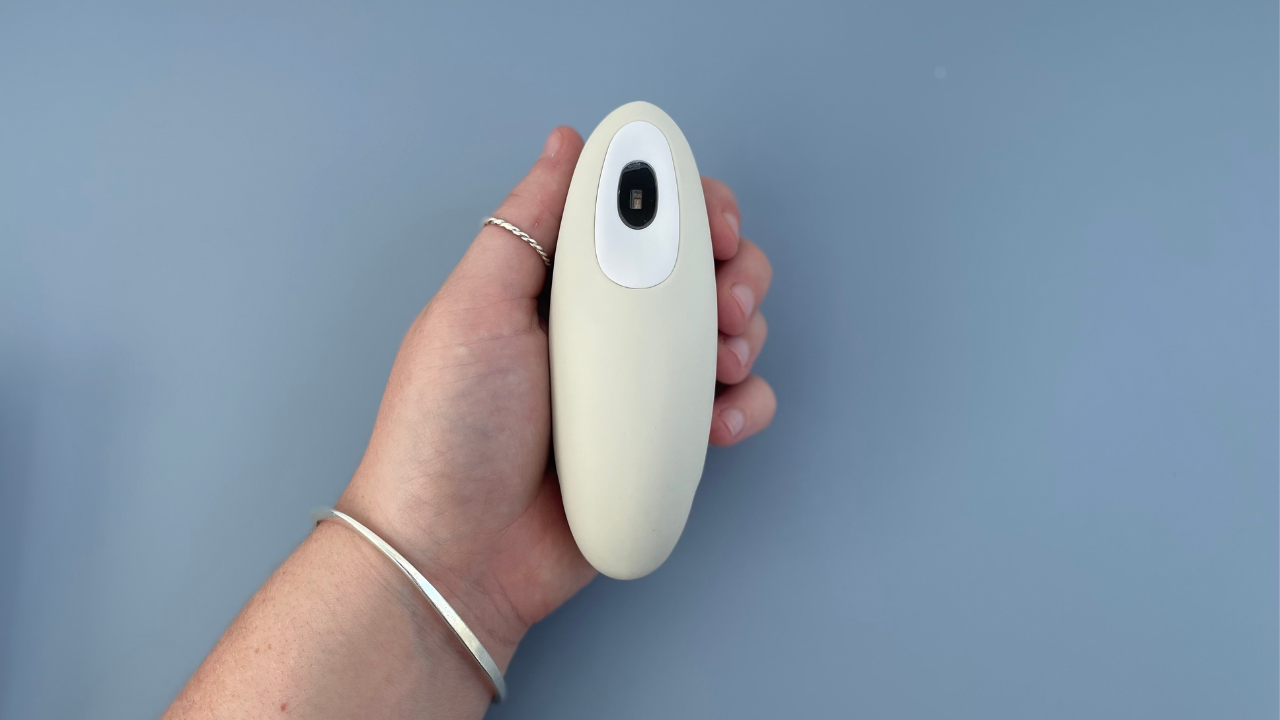
If you're looking for a new way to reduce the stress and anxieties of everyday life, give Moonbird a go. It's a handheld coaching device that takes you through different breathing exercises, tracking your health stats at the same time. Each exercise has a different effect and is successful in making users feel calmer and more relaxed. Whilst there are only 4 exercises and is somewhat limited, it's a device that does exactly what it's meant to do but does it really well.
-
+
Sleek and stylish appearance
-
+
Advanced health tracking features
-
+
100% works in decreasing stress and anxiety
-
-
It's not the most exciting thing in the world
-
-
Only 4 breathing exercises
Why you can trust T3

If you practise meditation and use breathing exercises to look after yourself, then I commend you. No matter how stressful my day has been, I will still turn towards a glass of wine or a good film in order to chill out, and I'm sure I'm not the only who does.
In recent years, smartwatches and fitness trackers have been informing us about our health and activity levels. Whilst it's great to have this information, they also have rather snazzy features such as allowing you to pick up a phone call or order items from Amazon with just a voice command. There actually aren't many devices out there that entirely focus on wellbeing, which is why I got really excited when I came across Moonbird.
Labelled as 'the world's first handheld breathing coach, Moonbird promises users easy and intuitive breathing exercises that are designed to reduce stress, anxiety and sleeping disorders. Stefanie Broes founded Moonbird with her brother, Michael, in 2019 to make the application of slow breathing techniques more widely accessible in order to improve people's general wellbeing. Now, we're big fans of wellness here at T3 (check out our 5 breathing hacks for better sleep & anxiety and 7-step mindful yoga flow to de-stress after a busy work day) so I was interested in seeing whether a device like the Moonbird was worth it, especially as there are so many breathing techniques out there that you can just carry out by yourself. Keep reading to find out what happened...
Moonbird review: price and availability
If you're interested in purchasing a Moonbird, they can be found on the website for an RRP of £159. The device is available in white, light blue, teal and black.
They aren't currently sold with other retailers, but they are available on Amazon every now and then:
Moonbird review: unboxing and set-up
Unboxing the Moonbird was certainly pleasant enough, especially as there weren't too many components to try and figure out. In the box comes the Moonbird itself, the charging cable and a blue suede storage bag. There is also a small instruction booklet which quickly explains that the Moonbird app explains the set-up experience further.
The device did come without any juice but it only took about 30 minutes to charge up again. I can also see how the white colour will pick up grime as time goes on, so it's good that a storage case is provided. I'd probably recommend going for one of the darker shades just to avoid potential grubbiness.
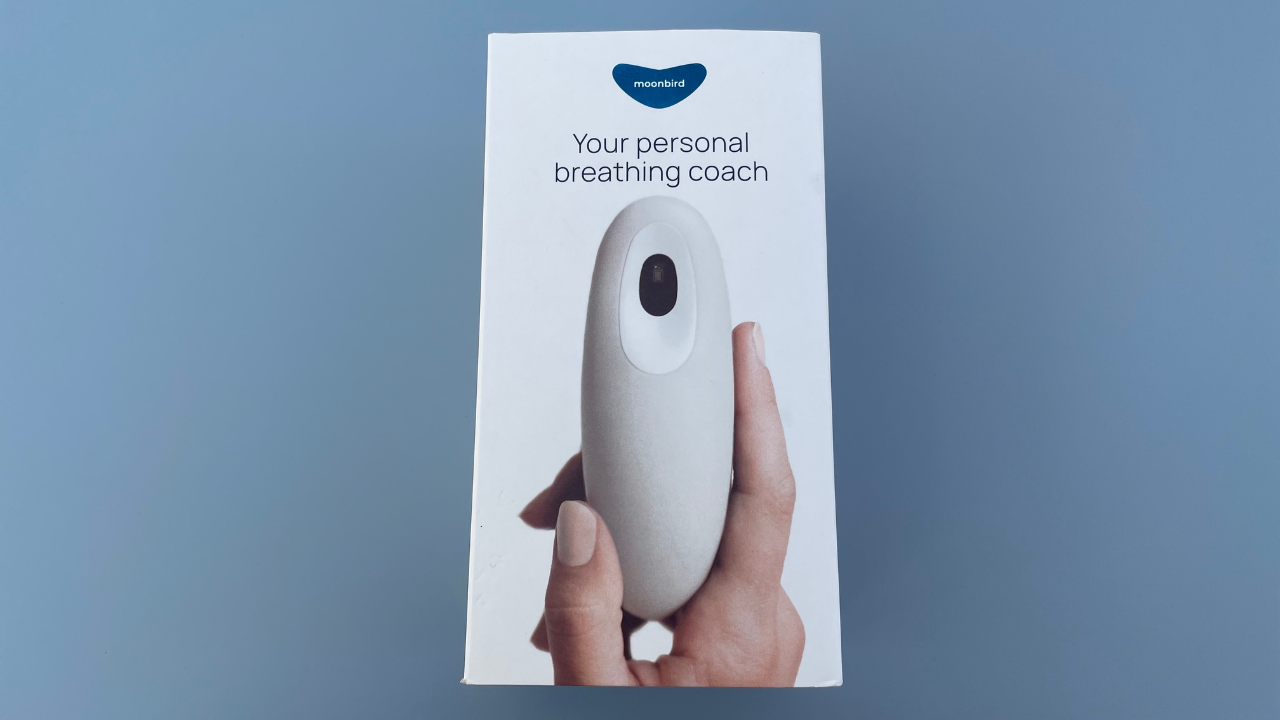

Moonbird review: design and features
The feel of the Moonbird is really nice, made from a soft silicone that fits comfortably in your hand. To turn the device on, you simply shake it and place your thumb over the sensor - there aren't any buttons involved.
Once I downloaded the app, more of the Moonbird features started to show. I'll be honest, I wasn't too excited up to this point. However, the app certainly demonstrates what the device has to offer and why it works for so many people. Straight away, I made an account and was asked to share some information. This included the reasoning behind wanting to use the Moonbird (I chose stress - who doesn't have stress in their lives?) as well as a few health stats. It then 'searches' for your Moonbird, connecting to it via bluetooth.
Once it was found, the app took me through the different exercises you can choose from. These include a breathing break, falling asleep, box breathing and curb anxiety. You can also choose to set your own breathing rhythm. It's nice that there's a variation, especially as the technique changes with each one. You're told what the technique is and how long it'll take, perfect if you're on the move or just want to take a few minutes before doing something else. You can also choose to have a meditative voice take you through each exercise, but this is optional.
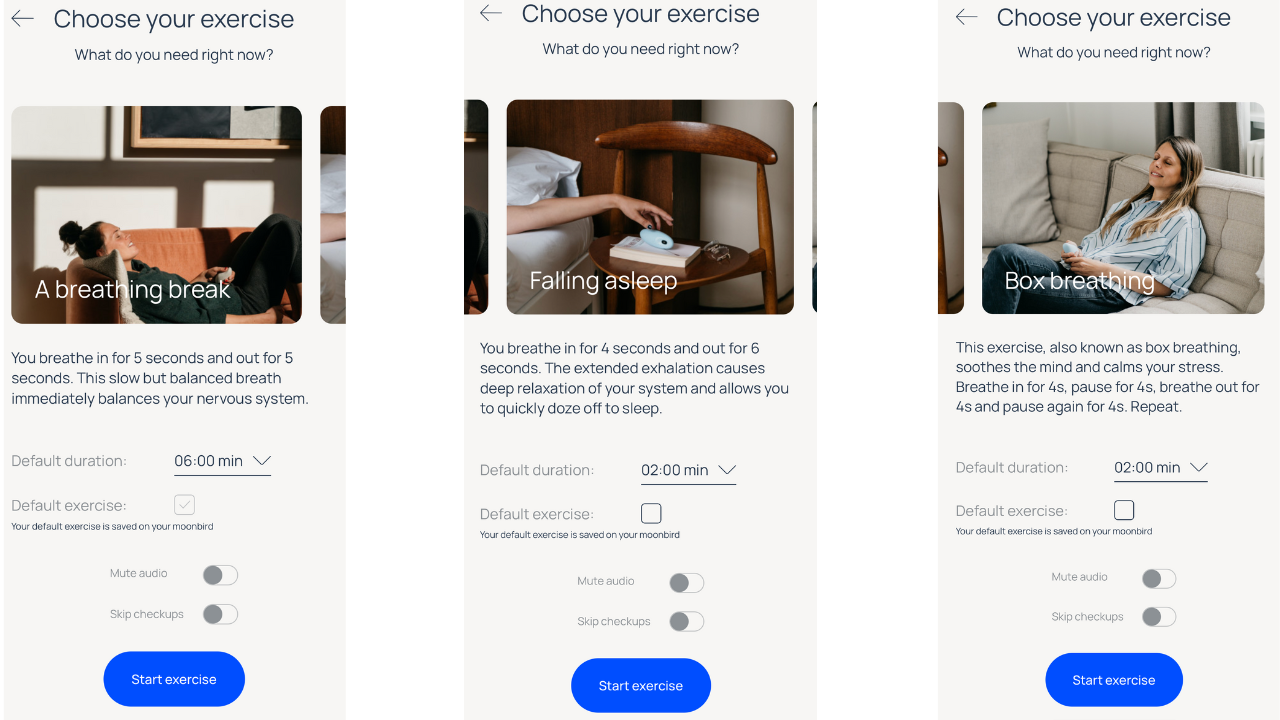
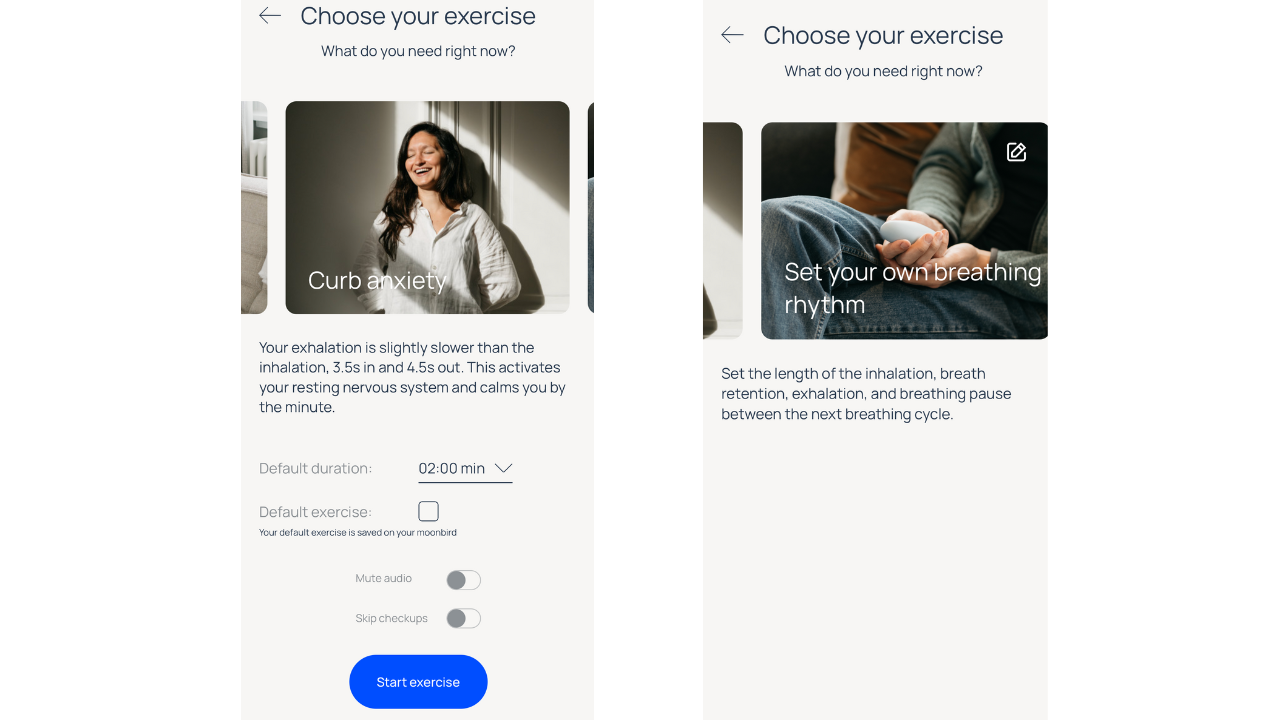
The app also allows you to track how many times you've used your Moonbird in a week, month or year. Now, this is where it gets really cool. With each session, you're able to track and examine your heart rhythm (HR), heart rate variability (HRV) and heart coherence. The app goes into more detail about how beneficial it is to track each of these three things, but it also shows you a graph with either a green, orange or red line.
The green line indicates that you're breathing coherently and that your nervous systems are balanced. The orange shows that you're on your way to coherent breathing but not quite there yet, and the red means you're not balanced yet and need to keep practising. If you're on a red or orange, it actually tells you that you need to carry on until you start feeling good again. In times where it's often difficult to keep on track of our wellbeing, this is a really great way to stay alert.
The app also has lots of advice and general reading on breathing exercises if you're interested in finding out more.
Moonbird review: performance
I committed to trying each of the 5 breathing exercises available to find out what effect each of them had. Each of the exercises are 6 minutes long and you input your 'check-in' feelings before you start. Once you finished, you then update this to see if you state of mind has changed.
A breathing break
The breathing break exercise was a nice place to start with the Moonbird, especially as it's designed to interject a few quiet minutes into a busy day. As I started the breathing, I instantly felt calmer. The device moves inwards on either side when you're supposed to breathe in and expands out when you're supposed to breathe out. This was easy to keep track of and didn't take my mind away from the meditative state I was in. Whilst the exercise was only 6 minutes, it felt a lot longer than this and I had to concentrate to keep going until the end, but that's probably just my attention span. If you see below, my heart coherence started off unbalanced (red line) but became balanced by the end of the exercise. My HR pretty much stayed the same throughout but my HRV was significantly higher by the end, indicating my stress levels had reduced. I was left feeling calmer and more focused, ready to jump back into my work.
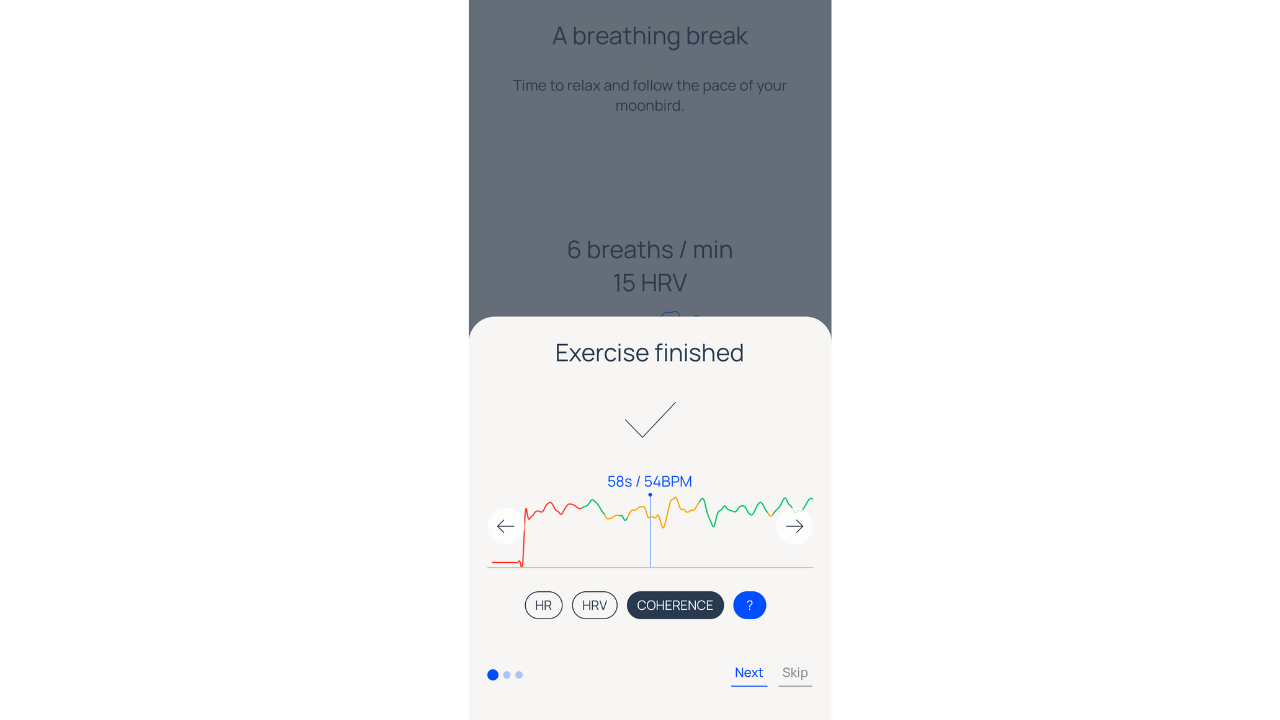
Falling asleep
After inputting my 'check-in' feelings, I tried the falling asleep exercise one night before closing my eyes. Falling asleep quickly has always been something I've struggled with, especially if I've had a stimulating day or have a lot on my mind. Again, this worked really well. Unlike the breathing break, you only breathe in for 4 seconds instead of 6 which is supposed to enhance your relaxation state. Once again, my heart coherence became balanced as I progressed with the exercise (see below) and my HR remained low and HRV began low and increased as it went on. I won't like, it didn't send me off to sleep immediately but I felt calmer which would have helped me drift off shortly after.

Box breathing
After trying box breathing after the breathing break exercise, I found it less soothing. I think this was because you only breathe in and out for 4 seconds, as opposed to 6, so it felt a little quicker than other exercises up to this point. This was also reflected in my coherence and HRV, which was lower than before. I can see how this would be a good one to use though if you prefer to have quicker breaths, or struggle to breathe in for 6 seconds at a time.
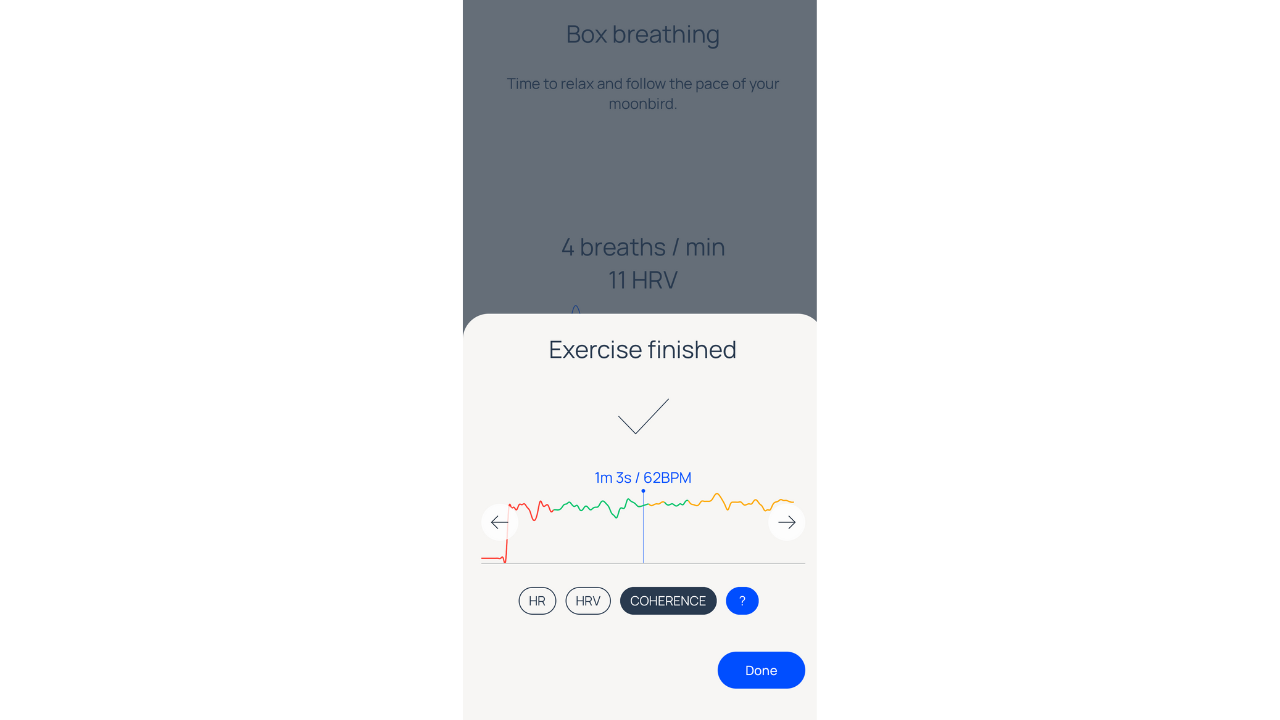
Curb anxiety
As someone who has struggled with anxiety before, I was looking forward to this exercise. Whilst this technique was also on the quick side (in for 3.5 seconds and out for 4.5 seconds), it didn't feel as restless as the box breathing technique. This may have been because the exhalation is slower than than inhalation but I certainly felt a lot calmer after I had finished, which you can also tell my the coherence graph. Again, my HR didn't really change and my HRV stayed high throughout.

Set your own breathing rhythm
The last setting is a chance for the user to completely tailor their own experience. This is a great option if there's a particular meditative routine that's worked for you previously and you'd like to continue using it, or if you've found one online that you want to try out using the Moonbird.
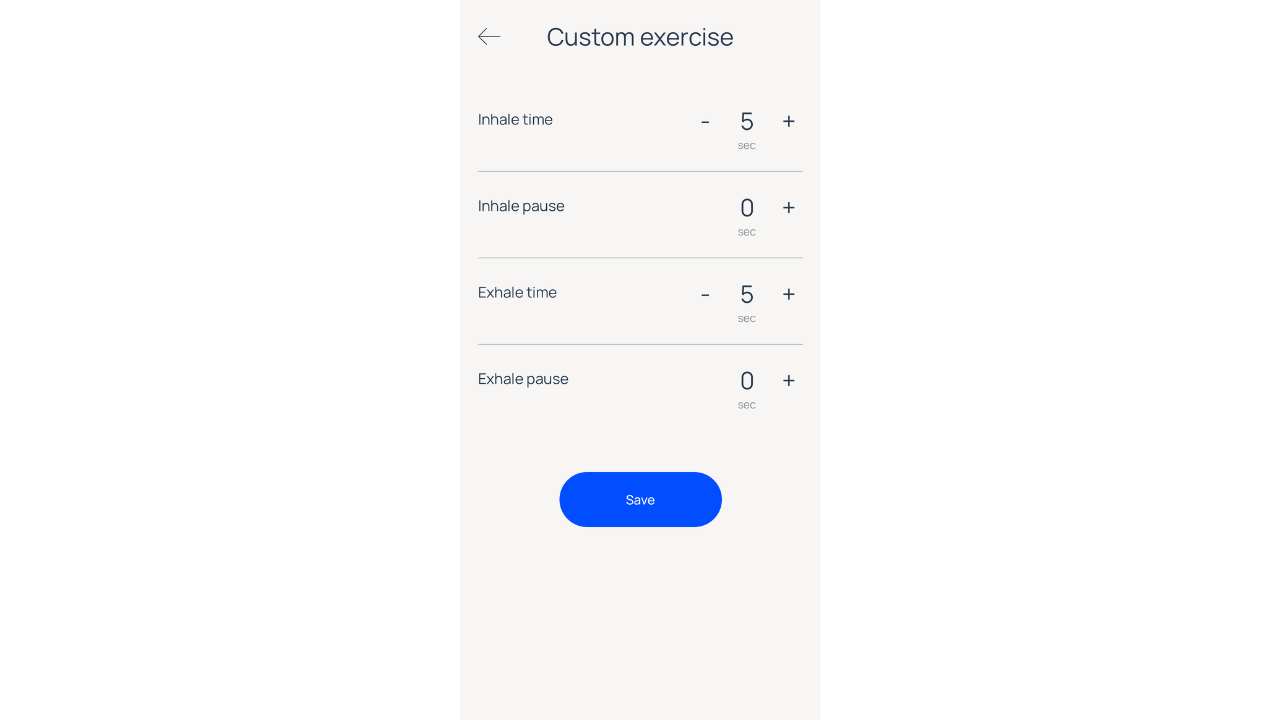
The app also allows you to set one of the above exercises as your default exercise. This means that when you want to use the device without using your phone or logging onto the app, you can simply just pick up the Moonbird, give it a shake and it will start your the default exercise you have chosen. I chose the curb anxiety technique as my default as it made me feel the most calm out of all of them.
Moonbird review: verdict
As previously mentioned, when I first started exploring the Moonbird, I wasn't completely sold. It seemed like it only had one job and that was it. However, after downloading the app and fully trialling each exercise, I can honestly say that it's a great wellness device that has its users' best interests at heart. The tracking features and reports are really fascinating and rather accurate as well. Whilst it only has 4 exercises (and one DIY!) and seems somewhat limiting in that regard, it's a device that does exactly what it's meant to do but does it really well.
Moonbird review: alternatives to consider
We haven't looked at too many wellness devices here at T3, but we have had a look at the Melo - a breathing exercise device designed by Theawellbeing. In a similar way to the Moonbird, it’s designed to alleviate stress, anxiety and help people get more in touch with their emotions and breathing.
It uses a combination of vibrations and coloured lights to guide you through breathing patterns to help lower your blood pressure and control your breathing.
The Melo is priced at just £49.99 and is available on the Theawellbeing website or at select retailers, like Amazon.
Sign up to the T3 newsletter for smarter living straight to your inbox
Get all the latest news, reviews, deals and buying guides on gorgeous tech, home and active products from the T3 experts

Lizzie is T3's Home Living Staff Writer, covering the latest in style, wellness and beauty tech. From skincare gadgets to vacuum cleaners, she's your go-to for trends and top recommendations.
When not writing, Lizzie enjoys mooching around Bath, spending time with loved ones, or testing her review units – often during an enthusiastic cleaning spree!
-
 Blink’s new Outdoor 4 security camera has its best battery life yet
Blink’s new Outdoor 4 security camera has its best battery life yetThe Blink Outdoor 4 is finally available in the UK
By Bethan Girdler-Maslen Published
-
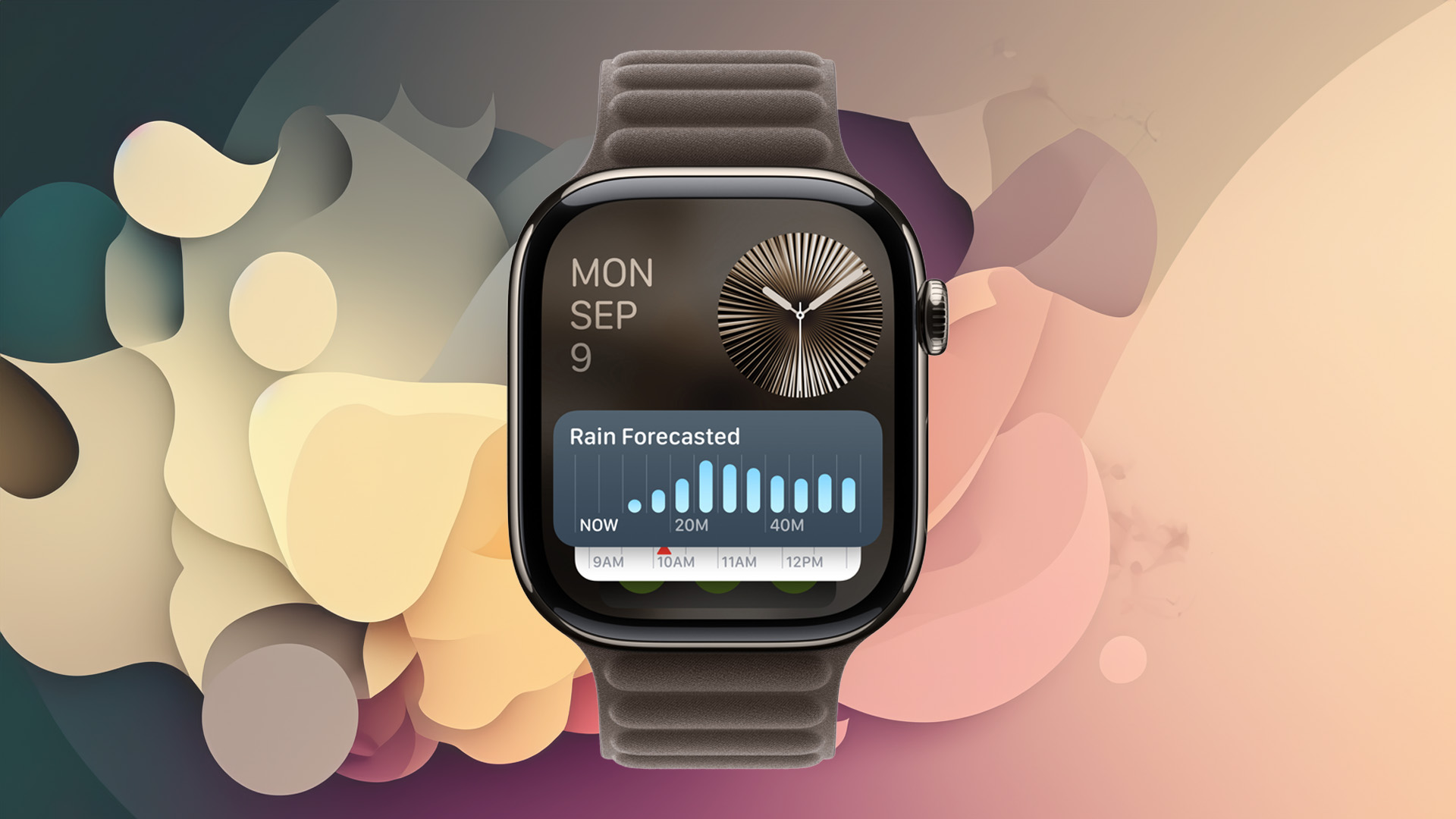 Apple Watch is set to get Apple Intelligence this year, but only with a little help from a friend
Apple Watch is set to get Apple Intelligence this year, but only with a little help from a friendBring on watchOS 12
By Britta O'Boyle Published
-
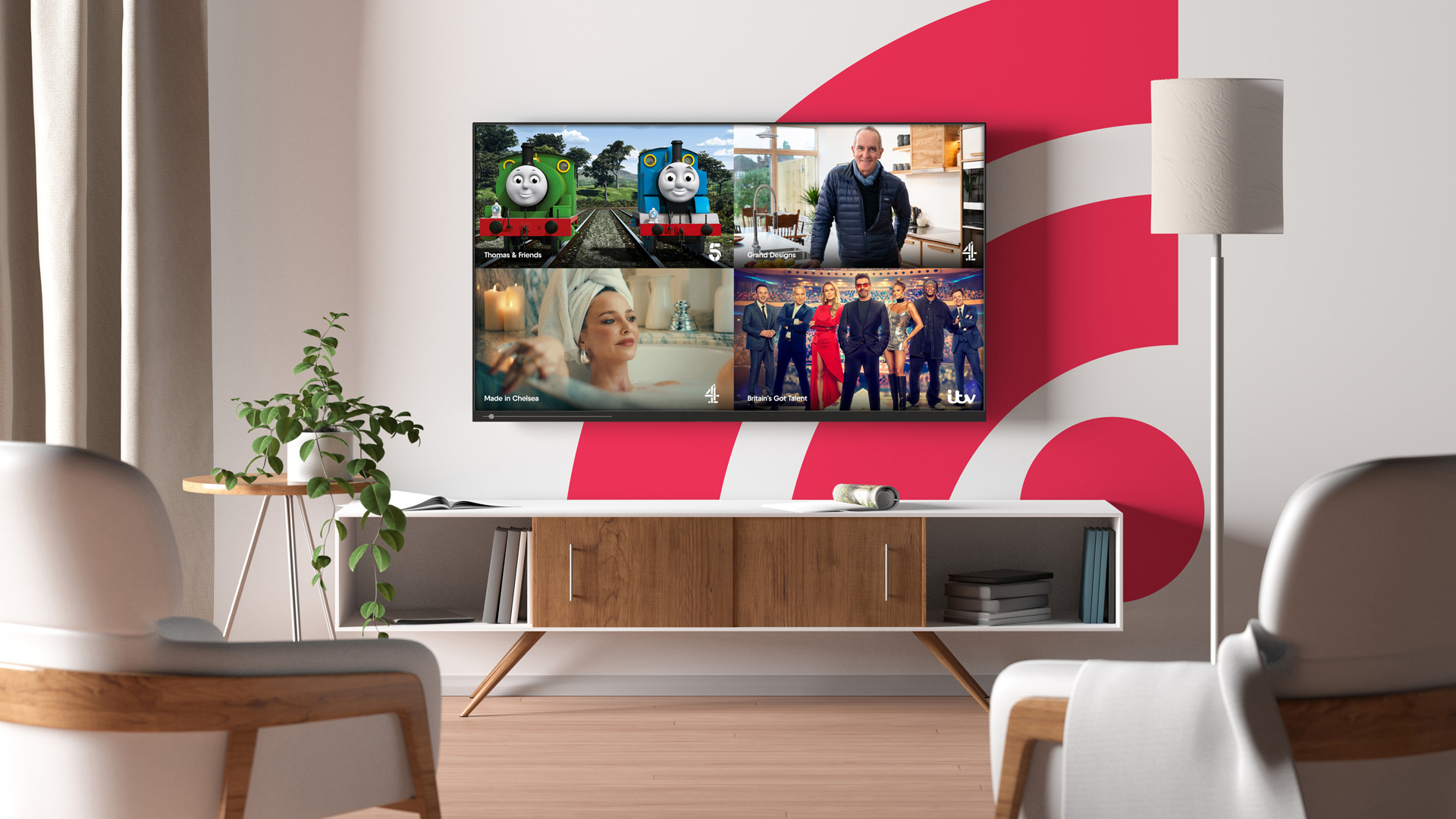 Your Smart TV might be getting 16 new channels for free – here's how to check
Your Smart TV might be getting 16 new channels for free – here's how to checkTVs with Freely will be able to stream a host of new channels "in the coming month"
By Rik Henderson Published